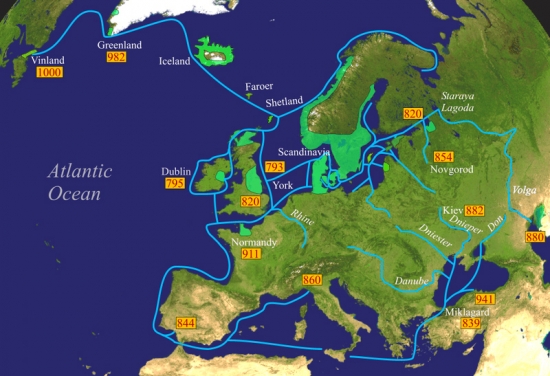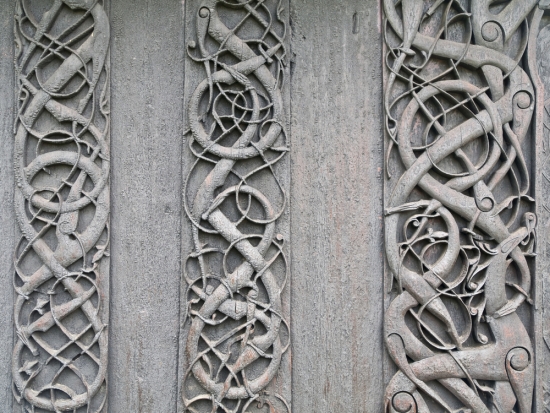C. Preparing the ground - the importance of Subject Knowledge
The more confident a teacher is in their subject knowledge, the more confident they may well feel in being able to teach it. Schools history does not stand in isolation from the way that academic historians structure the subject. Versions of the National Curriculum for History have attempted over the years to model how the concepts and processes of history as a discipline can shape the way that it is taught in schools.
However, a stumbling block to this aim can be the lack of specific subject knowledge both in terms of substantive knowledge about content or of the concepts and processes of the subject. Secondary schools have usually valued teachers who possess specialist subject knowledge but it is quite possible for such teachers to lack confidence in their grasp of particular content. It is not uncommon to hear a specialist claim "It's not my period" in relation to unfamiliar content.
For teachers of primary history who may well be very talented teachers, a recurring problem is that most are not history specialists and even if they are responsible for leading on the subject in their school, this does not mean they will feel confident in that role. So an opportunity in creating a sample medium term plan for use with Year 6 pupils in a primary school is to create more confidence in the subject knowledge of those who are teaching it.
This process can include;
- Identifying what teachers may already know (or not know) about particular content.
- Introducing or refreshing substantive historical knowledge about it.
- Understanding how and why the study of the content may have changed over time (this helps to give insight into potential controversies which may provide hooks into learning for pupils).
Suggested training activity:
1. Write up the term "Vikings". On a large sheet of paper ask teachers to sketch whatever they associate with the heading (or write these things down) with a set time limit. Ask each teacher or group of teachers to hold up their pieces of paper and share their perceptions of the Vikings.
2. Display the first slide from Resource A and discuss the extent to which the teacher`s suggestions in association with the term Vikings match the image (which anachronistically depicts a Viking warrior with a horned helmet). The point can be made about the popularity of this perception but its complete lack of basis in archaeological evidence or contemporary source material.
3. Explain that view of the Vikings have changed over time. Ask teachers to suggest a date for the image on the first slide. Discuss and reveal that it comes from a 1938 children's book and represents a view of the Vikings common from Victorian times that took the accounts of Viking raids, largely written by their Christian victims at face value. Display the second slide from Resource A which shows an extract about the Vikings from a 1920's children's book. Allow time for teachers to discuss the quote and judge the extent to which it supports the image on the first slide. Explain that this traditional view of the Vikings is still popular today. Then display slide four (which depicts Kirk Douglas in a 1950's film) and slide five showing a Shetlander dressed as a horned, helmeted Viking in the present for the annual Uphellia Festival. The following extract from the Horrible Histories series featuring "The Viking Song " could also be played.

4. Explain that in the 1060's, 1970's and 1980's historians began to challenge the traditional view of the Vikings as violent marauders, partly by reference to recent archaeological discoveries. Give out Resource B which is an extract from Vikings! By Magnus Magnusson, a historian and journalist of Icelandic background writing in 1980. Invite individuals/pairs to read the extract and lead a discussion about;
- how Magnusson depicts the Vikings,
- how this view contradicts the Victorian interpretation of them,
- the evidence that Magnusson used to support his claims,
- how convincingly the author makes his case.
5. Display slides three and four from Resource A which depict the logo of the Jorvik Viking Centre in York (opened in 1984) and the time chariots which take visitors through a reconstruction of ordinary life in Viking York based on archaeological excavations of the 1980's in the city. Discuss any memories that individuals may have of visiting the centre and discuss the extent to which the Centre promotes the view of the Vikings championed by Magnusson (it largely does, originally Magnus Magnusson provided the voiced narrative of the exhibition played on the timecasts - his voice has since been replaced with the popular historian Michael Wood).

6. Lastly, display slide seven from Resource A and ask teachers to read the quote from Simon Schama's History of Britain. Lead a discussion about:
- how Schama contradicts the views of Magnus Magnusson,
- how convincing teachers find his case,
- what the variety of views on the Vikings suggest about the study of history itself.
7. Either as a group or on an individual basis research the Vikings in more depth to get a better understanding of current academic knowledge about them. This could be done online, for example, through a podcast on The Vikings featuring Professor Rosamund McKitterick, Sidney Sussex College, University of Cambridge on the Historical Association (available free to primary members)
Discussions on the BBC Radio series ‘In Our Time' also provide insight into the current state of academic debate around the Vikings. The programmes available include:
Alfred and the Battle of Edington
As you listen are there any controversies or details which have the potential to hook the interest of Year 6 pupils? Where the personal interest of the teacher and learner are engaged in the subject matter, it is more likely that effective learning will take place.
Attached files:
- Before 1066 and all that Document C Resource A
644 KB Powerpoint presentation - Before 1066 and all that Document C Resource B
108.7 KB PDF document

